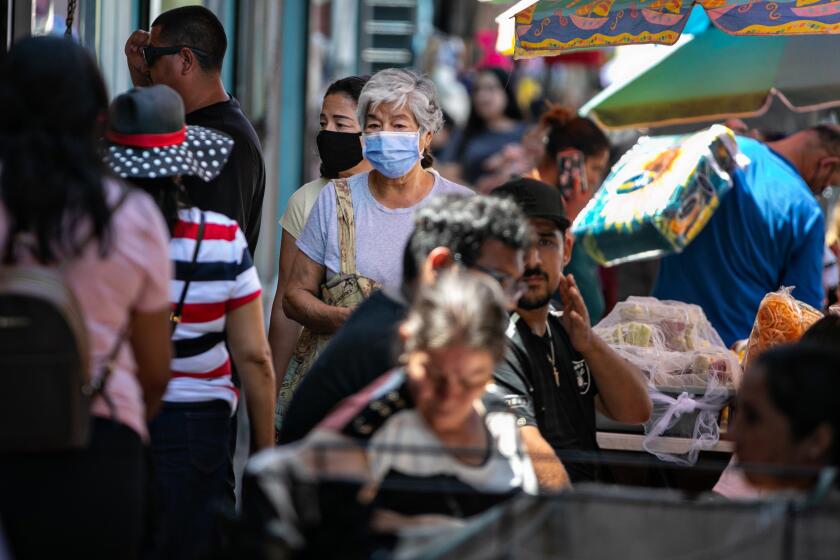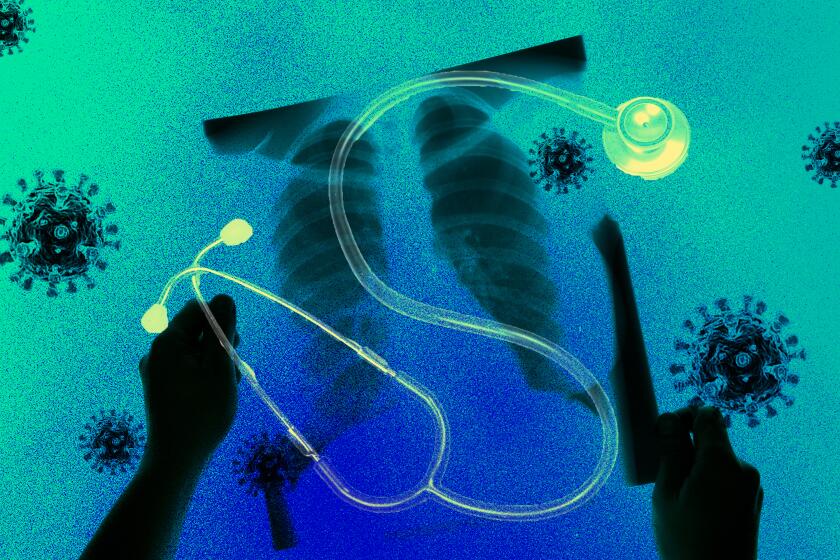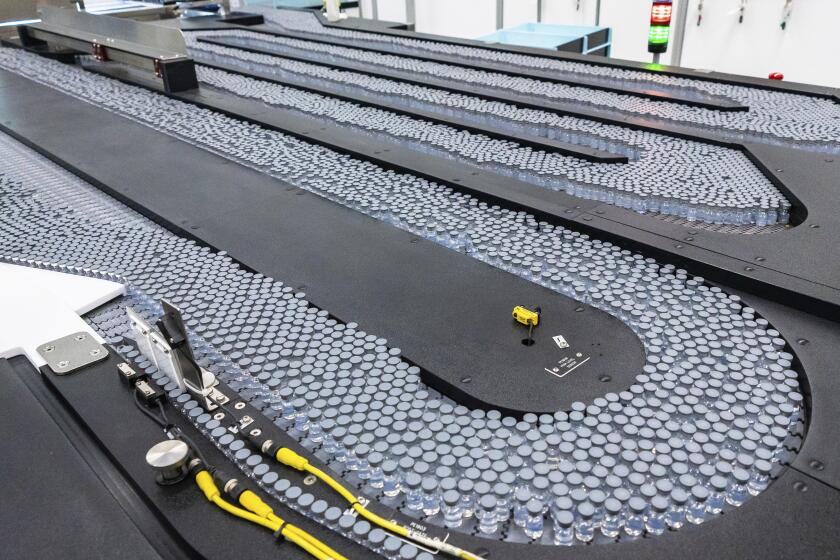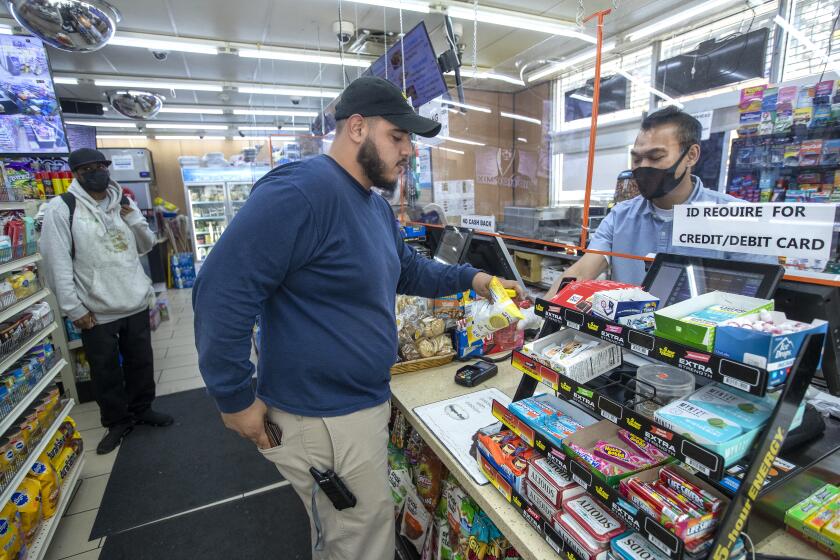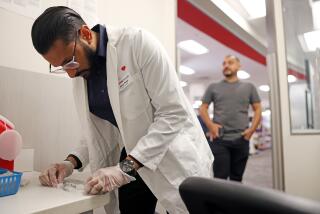New coronavirus subvariant BA.2.75.2 tops concerns as officials gear up for potential winter wave
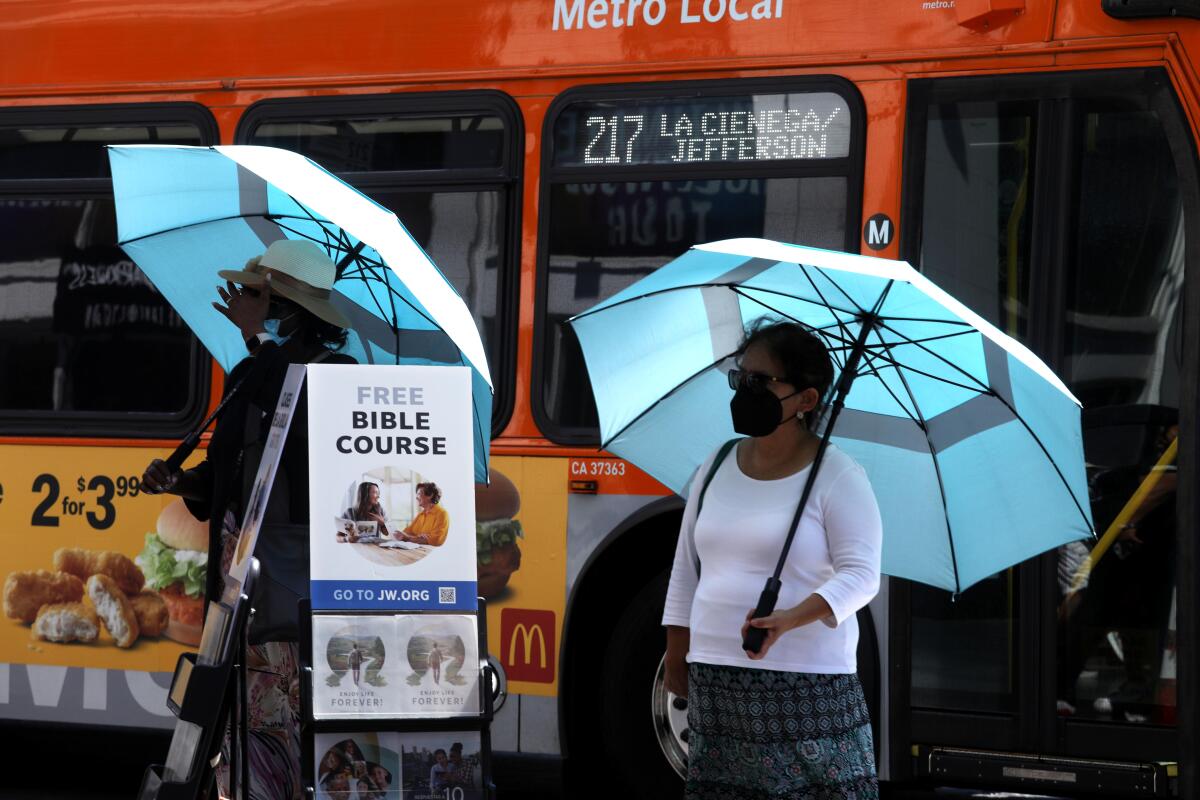
- Share via
As officials in California and beyond try to assess how severe a fall-and-winter coronavirus wave may be, one key factor is the growth of several new subvariants now emerging.
It’s too soon to say whether any of the newer variants will rise to prominence in the ways Omicron and Delta did. None have been documented in significant numbers in California or the nation. Still, experts say another super-spreading subvariant — combined with more people being indoors when the weather gets cold — could bring new challenges.
“As we get into this coming late fall and winter ... it is likely we will see another variant emerge,” Dr. Anthony Fauci, President Biden’s chief medical advisor for the pandemic, said at a recent virtual talk of the Center for Strategic and International Studies.
There is wide expectation for an increase in COVID-19 cases this fall and winter. New York is already recording an uptick since hitting a seasonal low in early September.
For now, California remains in a lull, with cases and hospitalizations declining since mid-summer. But in Los Angeles County, weekly deaths remain elevated and well above springtime lows, likely fueled by a case rate that, while improved, is still substantial.
“We’re all prepared for some increase in cases this fall. I think we’d like that to be minimal, and we think if more people can go ahead and get protected with the new bivalent boosters, that will really help everyone try to dampen down the possibility of seeing a very big surge,” L.A. County Public Health Director Barbara Ferrer said.
While there’s no shortage of pundits, politicians and other prognosticators clamoring to declare the end of the pandemic, the ultimate call is up to the World Health Organization.
But officials can’t rule out the possibility of a severe wave, given the unpredictability of the coronavirus.
“It would be foolish not to be prepared for uncertainty because we’ve just seen so much uncertainty,” Ferrer said. “This is a coronavirus. It mutates a lot. We cannot change that reality. [But] we feel very optimistic. We’ve got great tools.”
Following the distribution of COVID-19 vaccines, the pandemic’s previous surges have coincided with the emergence of new variants or subvariants that were more transmissible and circumvented the protections afforded by vaccines or previous infections.
Such constant mutations make the coronavirus a moving target. So while officials are largely confident that California and the U.S. are relatively well positioned heading into colder months — thanks to ready supplies of vaccines, therapeutics and the rollout of updated booster shots — they continue to keep a watchful eye on the horizon.
Most of the problematic variants have been referred to using letters from the Greek alphabet: Epsilon, Alpha, Delta and Omicron.
Omicron has dominated the globe since last fall, and today’s viral landscape is now marked by distinct subvariants of that strain. They are designated not with letters but with alphanumeric identifiers that have gotten more complex over time.
“Getting both vaccines at the same visit increases the chance that a person will be up to date with their vaccinations,” the CDC says.
Among them is BA.2.75.2, which Fauci identified as “one that looks suspicious — that it might start to evolve as a [troublesome] variant.”
BA.2.75.2 has not been found widely in the U.S., and the Centers for Disease Control and Prevention is not counting it separately from the less worrisome but similarly named BA.2.75.
“The one that we’ve been most concerned about recently is BA.2.75.2,” said Dr. Benjamin Pinsky, director of the Clinical Virology Laboratory at Stanford University.
At Stanford’s lab, scientists have identified only one case of that subvariant, he said.
The concern with BA.2.75.2 is that our collective antibodies — whether primed from past vaccination or a previous case — may be less able to recognize this new subvariant and ward off infection.
The L.A. Times wants to hear from long haul COVID-19 patients in California and their caregivers about how they’re navigating the challenges of their illness.
Specifically, a preprint study published in mid-September by scientists from Europe and Africa found that samples from random blood donors in Sweden were much less likely to recognize BA.2.75.2 compared to earlier subvariants.
The study also suggested the anti-COVID drug Evusheld was less effective against BA.2.75.2. Evusheld is a monoclonal antibody given to people with weakened immune systems to prevent coronavirus infection. Another monoclonal antibody, bebtelovimab, was still capable of detecting BA.2.75.2.
“Taken together, these data identify profound antibody escape by the emerging Omicron sublineage BA.2.75.2, suggesting that it effectively evades current [antibody] immunity in the population,” the report said.
Dr. Eric Topol, director of the Scripps Research Translational Institute in La Jolla, said two of the more concerning subvariants are BA.2.75.2 and BQ.1.1.
“They have already been established as the most extreme immune escape seen to date,” he said. And being more adept than BA.5 — the current dominant Omicron subvariant — “is not a good thing.”
The updated bivalent COVID-19 booster shots are available at more than 1,500 sites in Los Angeles County. Here’s how to get one.
Immune escape means “our immune system doesn’t see it very well because it has a lot of different mutations. So it basically has a work-around,” Topol said. “We haven’t seen this one before, and so it has enough mutations to be able to get into us despite our immune response because our immune response — it has a blind spot.”
Another subvariant, BA.2.3.20, could potentially be even worse because it has lots of mutations, though its level of immune escape hasn’t been characterized, Topol said. And a fourth subvariant worth watching is known as XBB.
What’s common about all these newer subvariants is “they have a growth advantage,” Topol said.
UC San Francisco infectious diseases expert Dr. Peter Chin-Hong is keeping an eye on another subvariant, BF.7, also known as BA.5.2.1.7, which could be contributing to a significant share of cases in Belgium and other European countries.
“It seems that BF.7 is having some legs right now,” Chin-Hong said. “The fact that this grandchild [of the original Omicron strain] is increasing means that it’s probably able to evade immunity because a lot of people got infected in Europe already” with BA.5.
A big question with the new COVID-19 vaccine: Can you mix brands? Here is what experts say
None of these subvariants are circulating at high levels in the U.S., CDC data show. And there’s hope that updated bivalent boosters — formulated specifically to target BA.5 and another Omicron subvariant, BA.4 — will also afford extra protection against those subvariants’ descendants, such as BF.7 and BA.4.6.
But what’s worrisome about other strains that have a high level of immune escape, including BA.2.75.2, is that they could begin a new surge and potentially reinfect people who have recovered even recently — something that occurred this summer when BA.5 supplanted BA.2.12.1.
“What we’ve learned during Omicron is vaccinated people can die, too, if they’re not boosted,” Chin-Hong said. “And it’s disproportionately affecting the older folks.”
If a subvariant emerges that “is really immune evasive, it means that more people will get infected because our ‘forcefield,’ in general, as a community will be broken. And as more people get infected, the older people will have an easier time getting infected, and therefore, that infection in them — if they’re not boosted — could lead to severe disease.
“I think hospitals should be on guard,” he added.
People at lower risk of severe COVID-19 — those with some immunity through vaccination or previous infection — are less likely to suffer severe illness or death. Even if they get infected, other parts of the immune system that take longer to rev up, and still work regardless of the subvariant, are expected to respond and reduce the risk of severe illness.
But for people at higher risk, their immune system needs to be prodded more frequently through booster shots to keep them better protected. Their immune systems “are more sluggish. They definitely need more reminders,” Chin-Hong said.
One bleak scenario would be the worst characteristics of new subvariants combining to form another new version.
“One of the questions that people have is recombination: so you can mix and match the best features of one with the other. And at some point, randomly, you will get something that has the immune evasion of BA.2.75.2, for example, and the transmissibility of BF.7,” Chin-Hong said.
Although a person’s schedule could change depending on health, occupation or travel plans, officials generally recommend the dose before holiday season.
For those at higher risk, COVID-19 is still causing hospitalizations and death, especially among people not up to date on vaccinations. Since August, roughly 350 to 500 Americans die daily from COVID-19, which if extrapolated over a year, would result in four to five times the annual number of flu deaths in an average year.
“It is a level of suffering and death that we do not accept as ‘living with COVID,’” Dr. Ashish Jha, the White House COVID-19 response coordinator, said Tuesday at a Center for Strategic and International Studies forum.
In the San Francisco Bay Area, which has never been as hard-hit by the pandemic compared with L.A. County, some experts suggest the era of local mask mandates is over.
But in L.A. County, health officials — while optimistic this winter could be better — say they need to be prepared for a scenario of booster shots being less helpful than anticipated because of new subvariants.
As a result, L.A. County’s Department of Public Health has not ruled out reimplementing mandatory mask mandates if hospital conditions get critical.
The state is largely rescinding its broad recommendation that everyone — regardless of vaccination status — mask up in indoor public settings.
If “we’re in a situation where there’s threats to the healthcare system, and we’re surrounded by people getting very sick ... I think people will go ahead and comply,” Ferrer said. “These are sensible public health precautions.”
She suspected that if hospitals were strained again, health officials elsewhere in California will reassess safety measures. L.A. County health officials were the first to reinstate a mask mandate in response to the rising Delta variant last summer. Other local governments and states adopted that approach in the following weeks and months as more threats emerged, including Omicron.
“We’re also realistic enough to know that there’s always a place for rules to make sure that the collective good is actually able to be realized,” Ferrer said.
More to Read
Sign up for Essential California
The most important California stories and recommendations in your inbox every morning.
You may occasionally receive promotional content from the Los Angeles Times.
